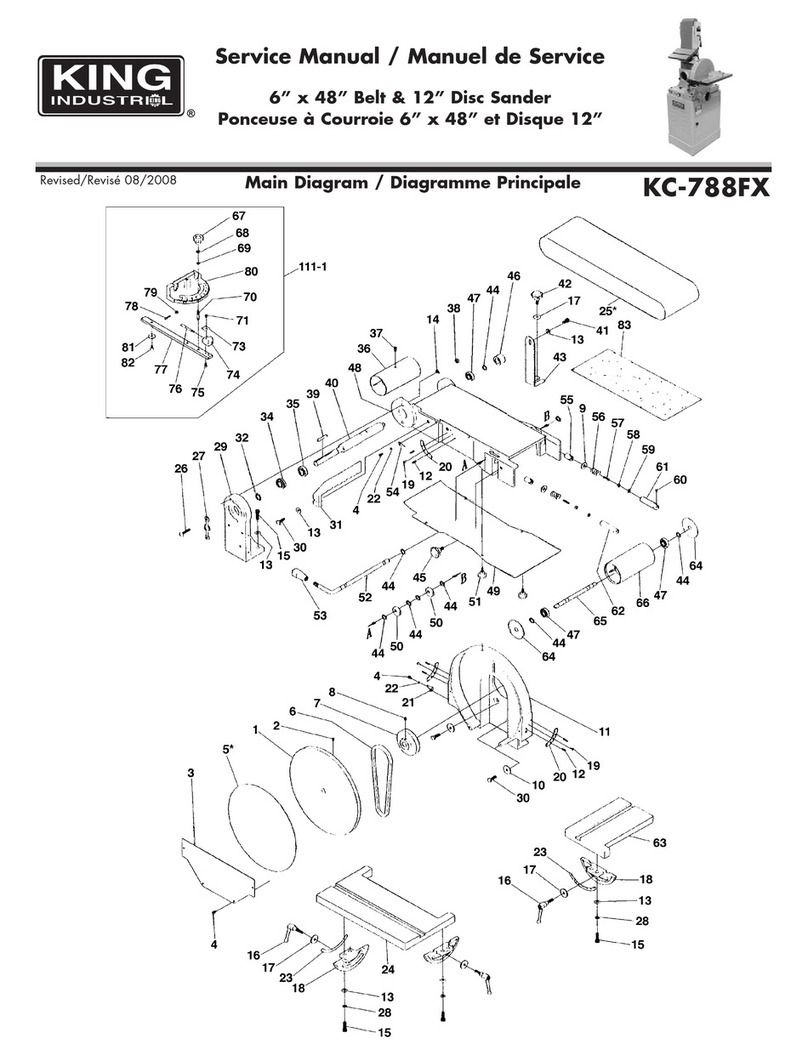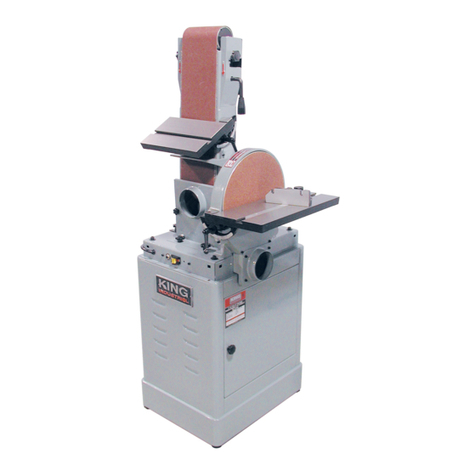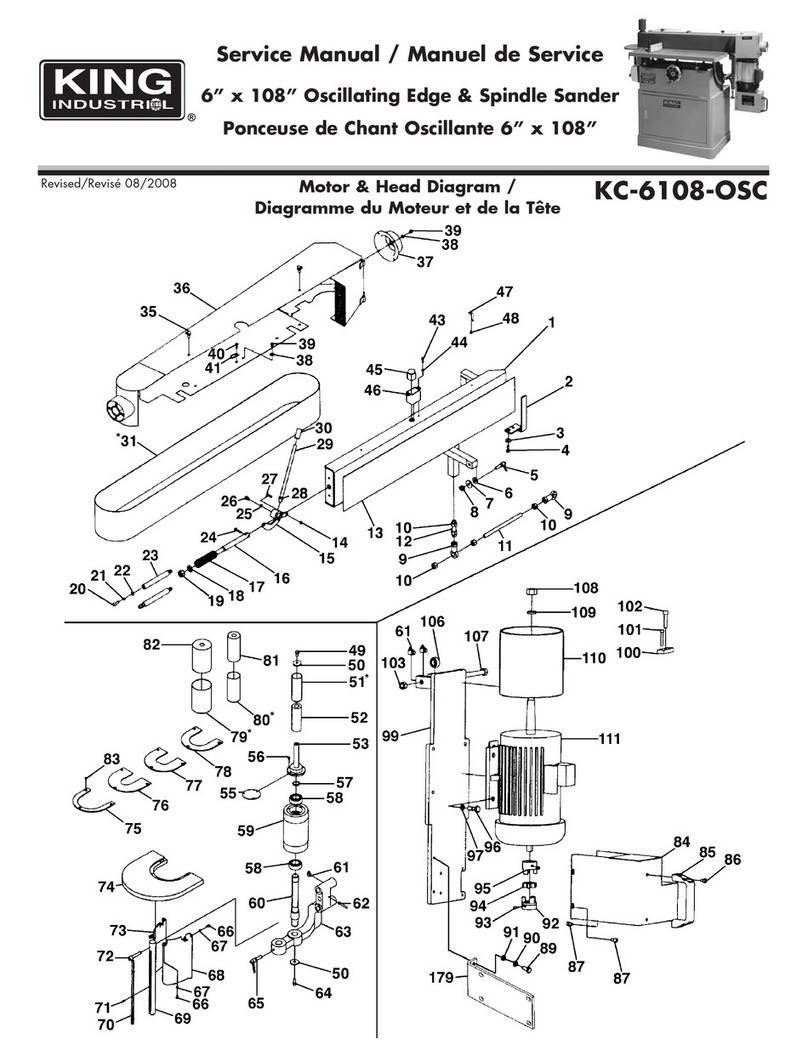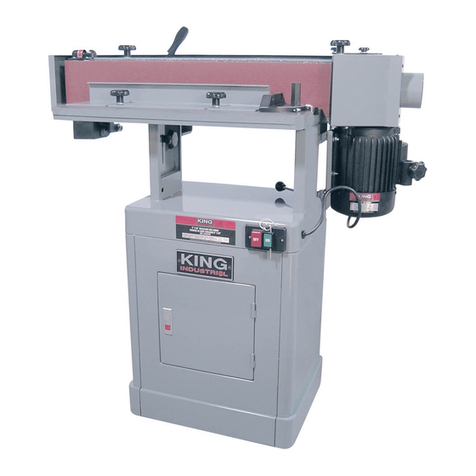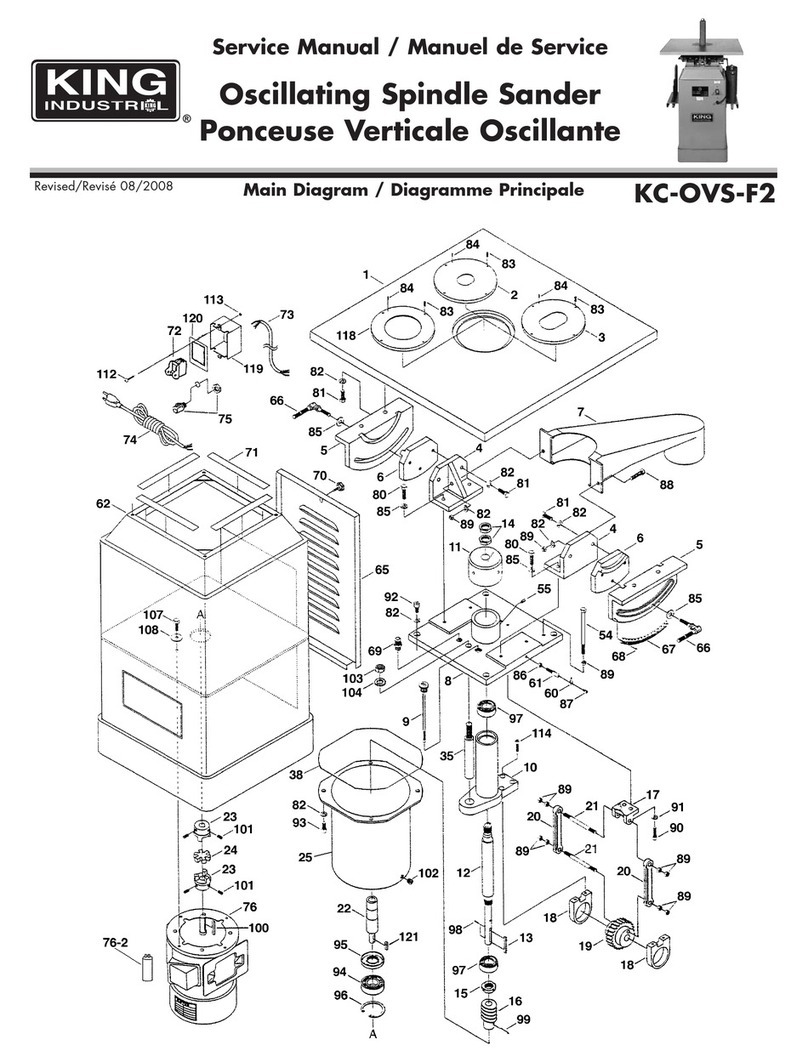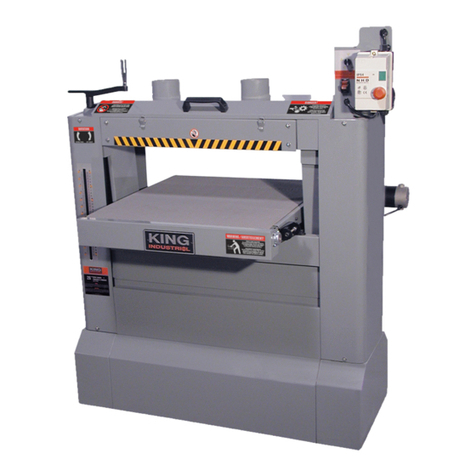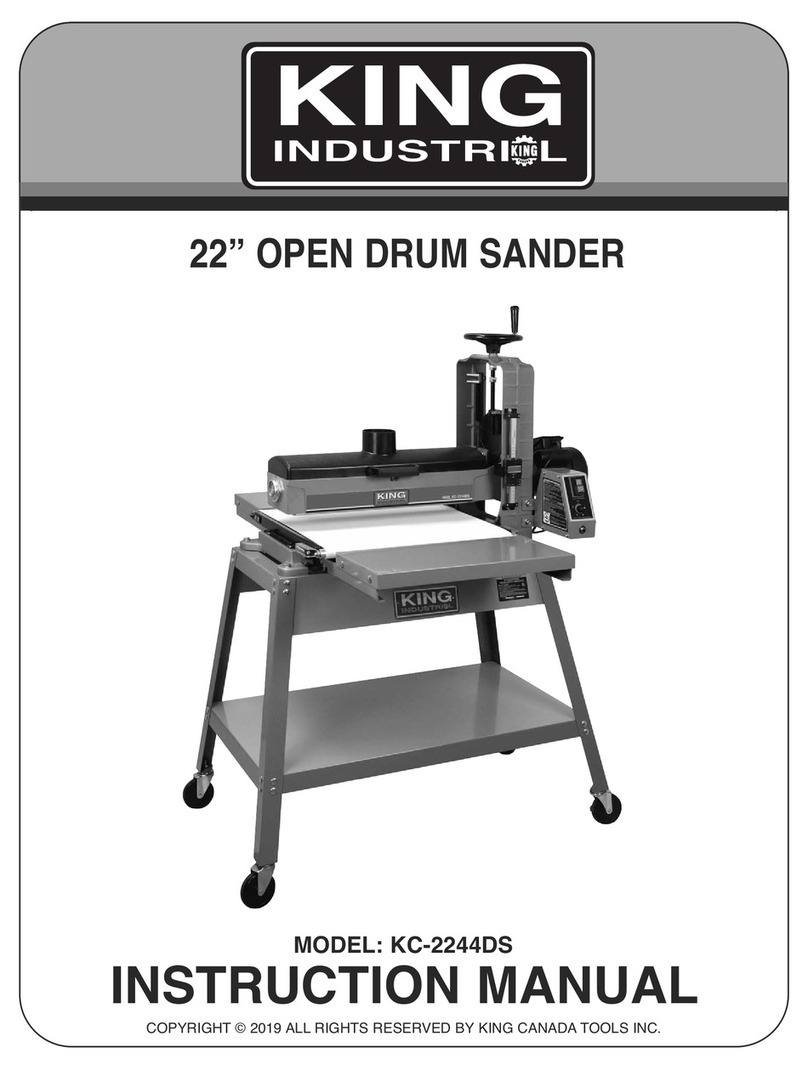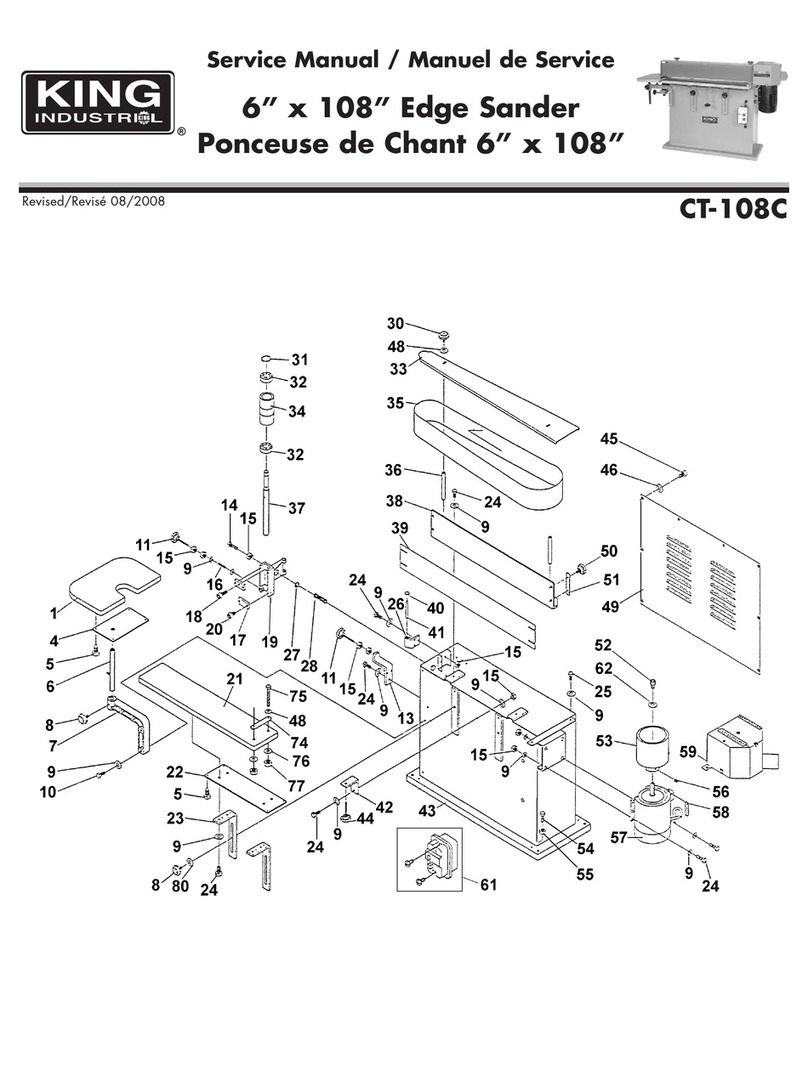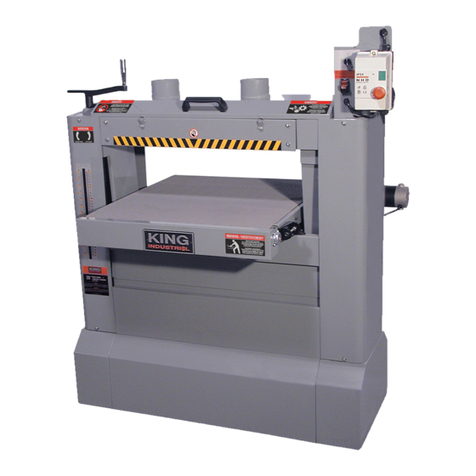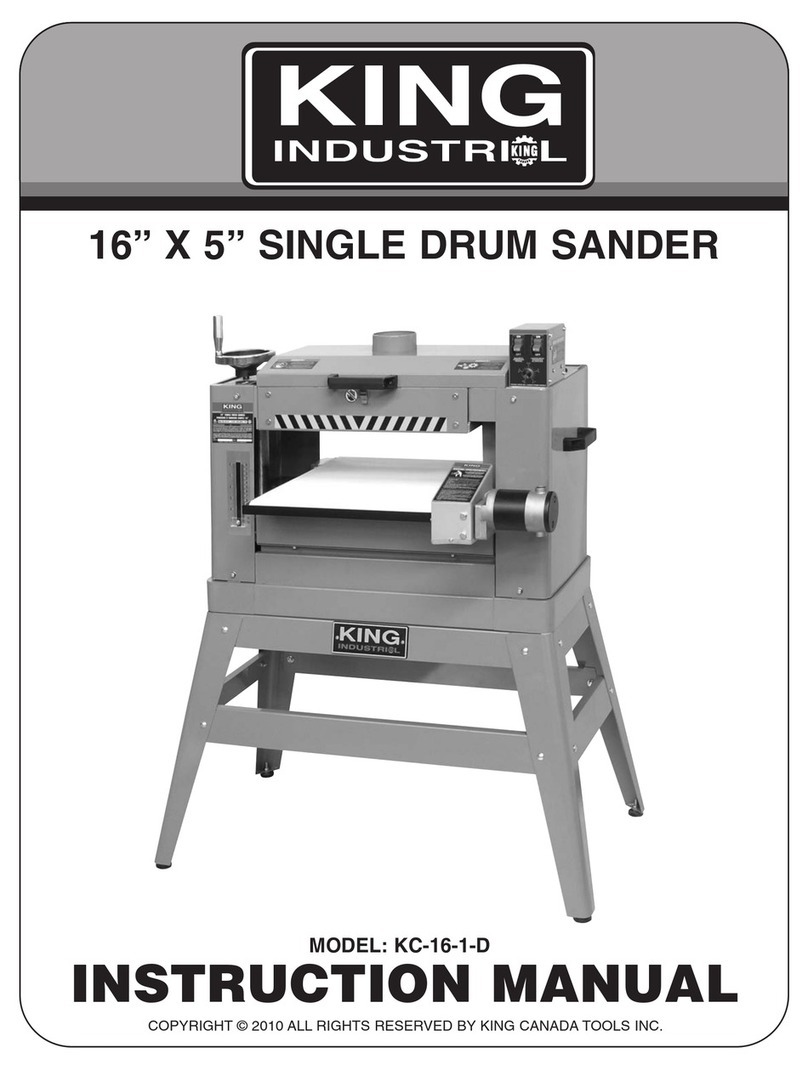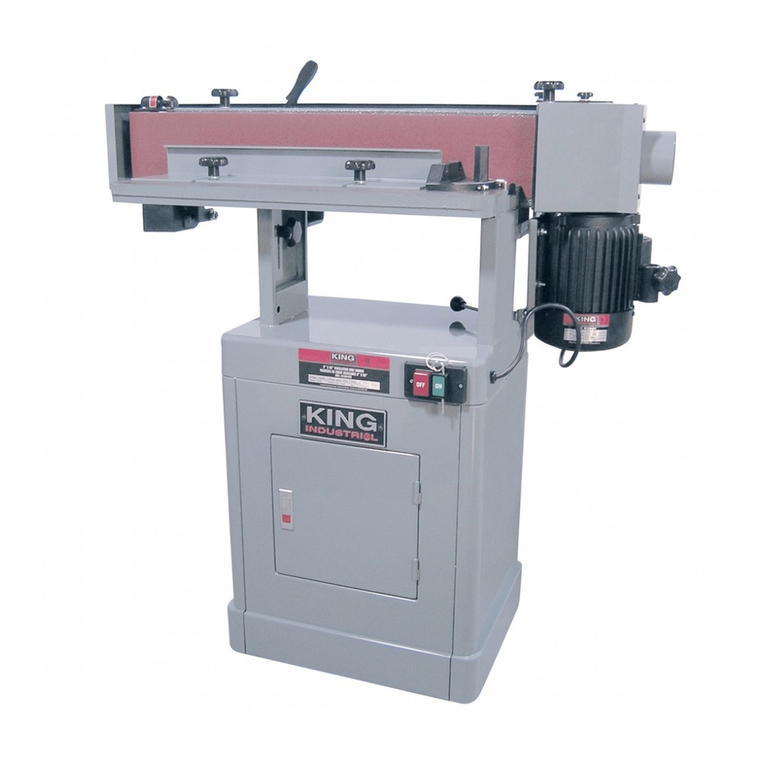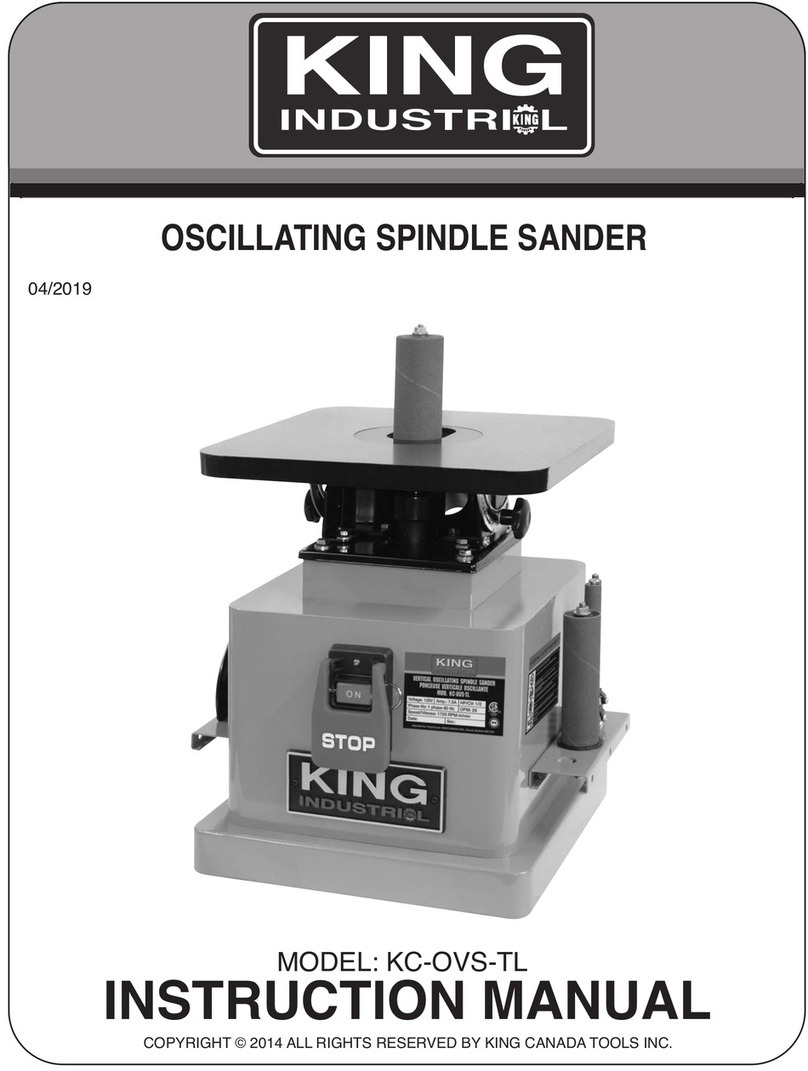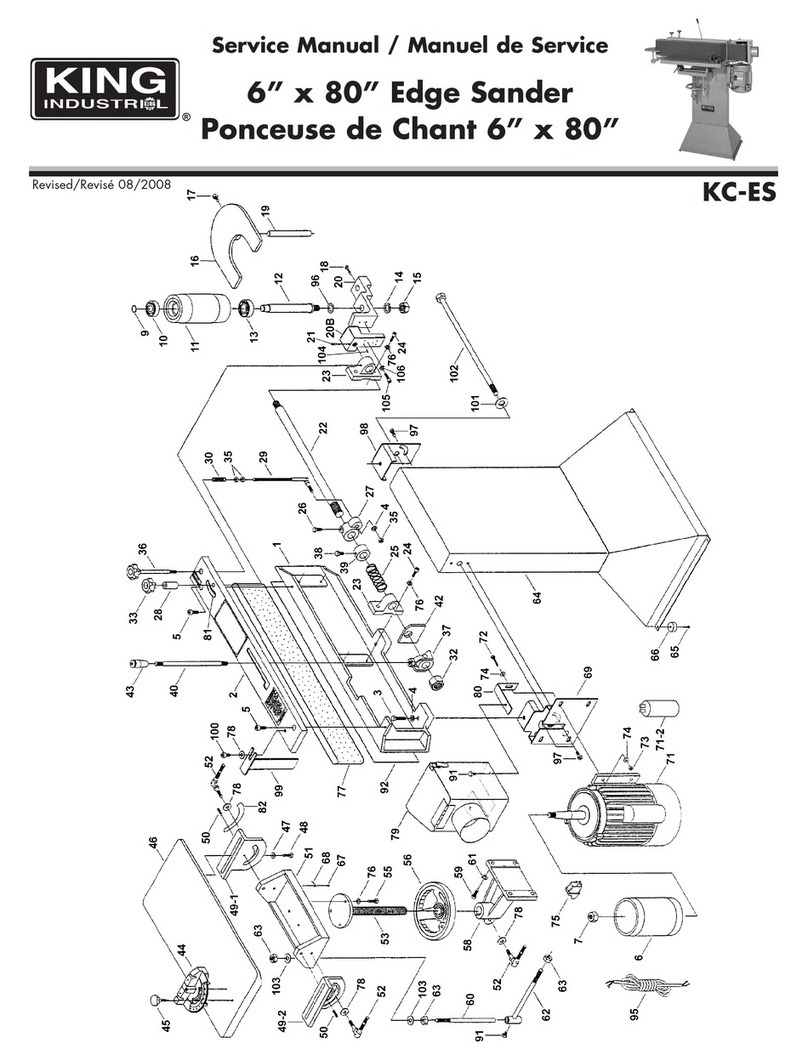
1. KN W Y UR T L
Read and understand the owners manual and labels affixed to the
tool. Learn its application and limitations as well as its specific po-
tential hazards.
2. GR UND THE T L.
This tool is equipped with an approved 3-conductor cord and a 3-
prong grounding type plug to fit the proper grounding type recep-
tacle. The green conductor in the cord is the grounding wire.
NEVER connect the green wire to a live terminal.
3. KEEP GUARDS IN PLACE.
eep in good working order, properly adjusted and aligned.
4. REM VE ADJUSTING KEYS AND
WRENCHES.
Form habit of checking to see that keys and adjusting wrenches
are removed from tool before turning it on.
5. KEEP W RK AREA CLEAN.
Cluttered areas and benches invite accidents. Make sure the floor
is clean and not slippery.
6. AV ID DANGER US ENVIR NMENT.
Don’t use power tools in damp or wet locations or expose them to
rain. eep work area well lit and provide adequate surrounding
work space.
7. KEEP CHILDREN AWAY.
All visitors should be kept a safe distance from work area.
8. MAKE W RKSH P CHILD-PR F.
-with padlocks, master switches or by removing starter keys.
9. USE PR PER SPEED.
A tool will do a better and safer job when operated at the proper
speed.
10. USE RIGHT T L.
Don’t force the tool or the attachment to do a job for which it was
not designed.
11. WEAR PR PER APPAREL.
Do not wear loose clothing, gloves, neckties or jewelry (rings,
watch) because they could get caught in moving parts. Non-slip
footwear is recommended. Wear protective hair covering to contain
long hair. Roll up long sleeves above the elbows.
12. ALWAYS WEAR SAFETY GLASSES.
Always wear safety glasses (ANSI Z87.1). Everyday eye-glasses
only have impact resistant lenses, thet are N T safety glasses.
Also use a face or dust mask if cutting operation is dusty.
13. D N’T VERREACH.
eep proper footing and balance at all times.
14. MAINTAIN T L WITH CARE.
eep tools sharp and clean for best and safest performance. Follow
instructions for lubricating and changing accessories.
15. DISC NNECT T LS.
Before servicing, when changing accessories or attachments.
16. AV ID ACCIDENTAL STARTING.
Make sure the swich is in the ‘’OFF’’ position before plugging in.
17. USE REC MMENDED ACCESS RIES.
Consult the manual for recommended accessories. Follow the in-
structions that accompany the accessories. The use of improper
accessories may cause hazards.
18. NEVER STAND N T L.
Serious injury could occur if the tool tips over. Do not store materials
such that it is necessary to stand on the tool to reach them.
19. CHECK DAMAGED PARTS.
Before further use of the tool, a guard or other parts that are dam-
aged should be carefully checked to ensure that they will operate
properly and perform their intended function. Check for alignment
of moving parts, breakage of parts, mounting, and any other condi-
tions that may affect its operation. A guard or other parts that are
damaged should be properly repaired or replaced.
20. NEVER LEAVE MACHINE RUNNING
UNATTENDED.
Turn power ‘’OFF’’. Don’t leave any tool running until it comes to a
complete stop.
SPECIFIC SAFETY RULES F R SPINDLE SANDERS
Safety is a combination of common sense, staying alert and knowing
how your spindle sander works. Read and understand the following
safety rules before operating.
1. For your own safety, read the entire instruction manual before oper-
ating the spindle sander.
2. Tighten all lock knobs or handles before operating.
3. Select a spindle that is smaller than the curve to be sanded.
4. Use an insert plate that comes closest to the spindle without touching
it.
5. Make sure the spindle is properly positioned in taper sleeve
socket using the wrench provided, tighten the nut. NOTE: Never over
tighten; it may be difficult to remove the spindle later.
6. When table is positioned at any angle other than 90°, it is necessary
to position the workpiece over the centerline.
7. Always lock the table with the lock knobs when setting at any angle.
8. Always loosen both table lock and tilting gear lock before changing
the angle position of the table. Never force the table if it does not tilt
easily, reason may be that the locks are still engaged. Never attempt
to override the stop locks, this will cause damage to the tilting per-
formance.
9. Before leaving the machine remove any particles or pieces left over,
make sure the table is set at a 90° angle.
GENERAL & SPECIFIC
SAFETY RULES
